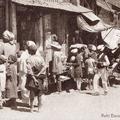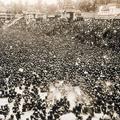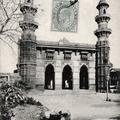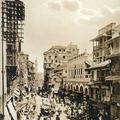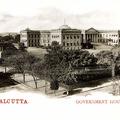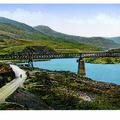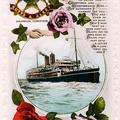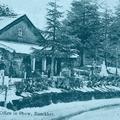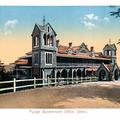Kulri Bazaar, Mussoorie
Kulri Bazaar, Mussoorie almost feels painterly in its alternating pattern light and soft dark fabrics. In the center, his back turned to us, but with no apparent import, is a British man wearing an infamous solar topee, the sartorial logo of the Raj.

